I installed Adobe Photoshop CS5 on my laptop even though I don’t like photoshop. I looked at the dng files and even though I could see high resolution images, the jpg that the drone took looked better than the dng file. I guess I will turn off raw on the drone as I saw no improvementAdobe has a free RAW converter.Version 14.3.0 Also try Irfanview for PC. I use the AdobeCamera RAW (ACR) that comes with Photoshop and Lightroom.
You are using an out of date browser. It may not display this or other websites correctly.
You should upgrade or use an alternative browser.
You should upgrade or use an alternative browser.
Anyone else disappointing with picture quality?
- Thread starter shadow3467
- Start date
jonthecourier
Well-Known Member
- Joined
- Mar 21, 2019
- Messages
- 149
- Reactions
- 92
I envy you all being able to edit, I downloaded Divinci but it was looking so complicated so tried others and even appealed on Facebook for some help as I have difficulty learning things because of a work induced breakdown years ago and so I'm stuck but I have mastered Gimp but it doesn't edit video. Keep up the good work.
Yes Adobe has a free Raw converter its very good, cheers LenAdobe has a free RAW converter.Version 14.3.0 Also try Irfanview for PC. I use the AdobeCamera RAW (ACR) that comes with Photoshop and Lightroom.
At the risk of getting into yet another prolonged software discussion, if you cannot see the difference between a JPG and a RAW file, it might be that you are shooting with good light. But the moment you start to shoot sunrises, sunsets, and other high dynamic range images, you will find that you cannot recover shadow details in the foreground very well from a JPG image.I installed Adobe Photoshop CS5 on my laptop even though I don’t like photoshop. I looked at the dng files and even though I could see high resolution images, the jpg that the drone took looked better than the dng file. I guess I will turn off raw on the drone as I saw no improvement
Here is an image taken last night with my phone for an example of recovering shadows.
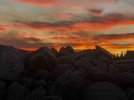
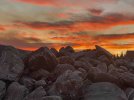
Raw files aren't intended to look good straight from the camera. They typically look flat and pale. The raw format stores more information and provides greater opportunities for editing.I installed Adobe Photoshop CS5 on my laptop even though I don’t like photoshop. I looked at the dng files and even though I could see high resolution images, the jpg that the drone took looked better than the dng file. I guess I will turn off raw on the drone as I saw no improvement
I totally agree with MS Coast. RAW files hold a lot more data because they contain thousands pixels of data and you can recover details in both the highs and lows (skies and shadows). Beginners shoot in JPG and gradually learn to shoot in RAW and process the results. I have taken numerous photo workshops and the teacher never shoots in jpg.Raw files aren't intended to look good straight from the camera. They typically look flat and pale. The raw format stores more information and provides greater opportunities for editing.
See my before and after images above.
I was so bothered by this question that I decided to look for a better example. In todays forum, I found this shot. Here is the example of shooting at the sun and not being able to recover details in the foreground shadows without the Adobe masking tool. Here is a before and after processing example of why you need to shoot in RAW.I installed Adobe Photoshop CS5 on my laptop even though I don’t like photoshop. I looked at the dng files and even though I could see high resolution images, the jpg that the drone took looked better than the dng file. I guess I will turn off raw on the drone as I saw no improvement
Dale
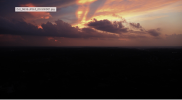
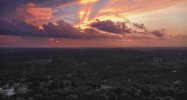
Wow. That's impressive. I saw that photo in the original post and thought it was looking out over a nearby ridge line.
Does your version of Photoshop have a masking feature that automatically detects the dark below-horizon areas in shots like that or are you manually creating the mask?
Does your version of Photoshop have a masking feature that automatically detects the dark below-horizon areas in shots like that or are you manually creating the mask?
To MS Coast and all:Wow. That's impressive. I saw that photo in the original post and thought it was looking out over a nearby ridge line.
Does your version of Photoshop have a masking feature that automatically detects the dark below-horizon areas in shots like that or are you manually creating the mask?
For everyone out there, here it is ...the best video I can recommend for the new Adobe Masking Tool by my favorite Photoshop instructor, Colin Smith. This release by Adobe in 2021 was a game changer for me. If you are shooting sunrises, sunsets, or anything where there is a high dynamic range and you want to bring out details in the shadows, this is the tool you need! Watch this and you will thank me. The basic new maskin tutorial is first, and the 2nd video is for slightly more complex masking.
Watch the first tutorial, then the second
https://youtu.be/xL7CjkZ47_8
Last edited:
Your raw files have exactly the same number of pixels as the corresponding jpg file does.RAW files hold a lot more data because they contain thousands pixels of data
Wikipedia to the rescue
A camera raw image file contains minimally processed data from the image sensor of either a digital camera, a motion picture film scanner, or other image scanner.[1][2] Raw files are named so because they are not yet processed and therefore are not ready to be printed or edited with a bitmap graphics editor. Normally, the image is processed by a raw converter in a wide-gamut internal color spacewhere precise adjustments can be made before conversion to a "positive" file format such as TIFF or JPEG for storage, printing, or further manipulation. There are dozens of raw formats in use by different manufacturers of digital image capture equipment.
 en.wikipedia.org
en.wikipedia.org
A camera raw image file contains minimally processed data from the image sensor of either a digital camera, a motion picture film scanner, or other image scanner.[1][2] Raw files are named so because they are not yet processed and therefore are not ready to be printed or edited with a bitmap graphics editor. Normally, the image is processed by a raw converter in a wide-gamut internal color spacewhere precise adjustments can be made before conversion to a "positive" file format such as TIFF or JPEG for storage, printing, or further manipulation. There are dozens of raw formats in use by different manufacturers of digital image capture equipment.
Raw image format - Wikipedia
 en.wikipedia.org
en.wikipedia.org
Flashheart
Well-Known Member
I'm very happy with daytime performance, but low light performance is a bit meh. I took this today at Stonehenge at sunset and processed from DNG.
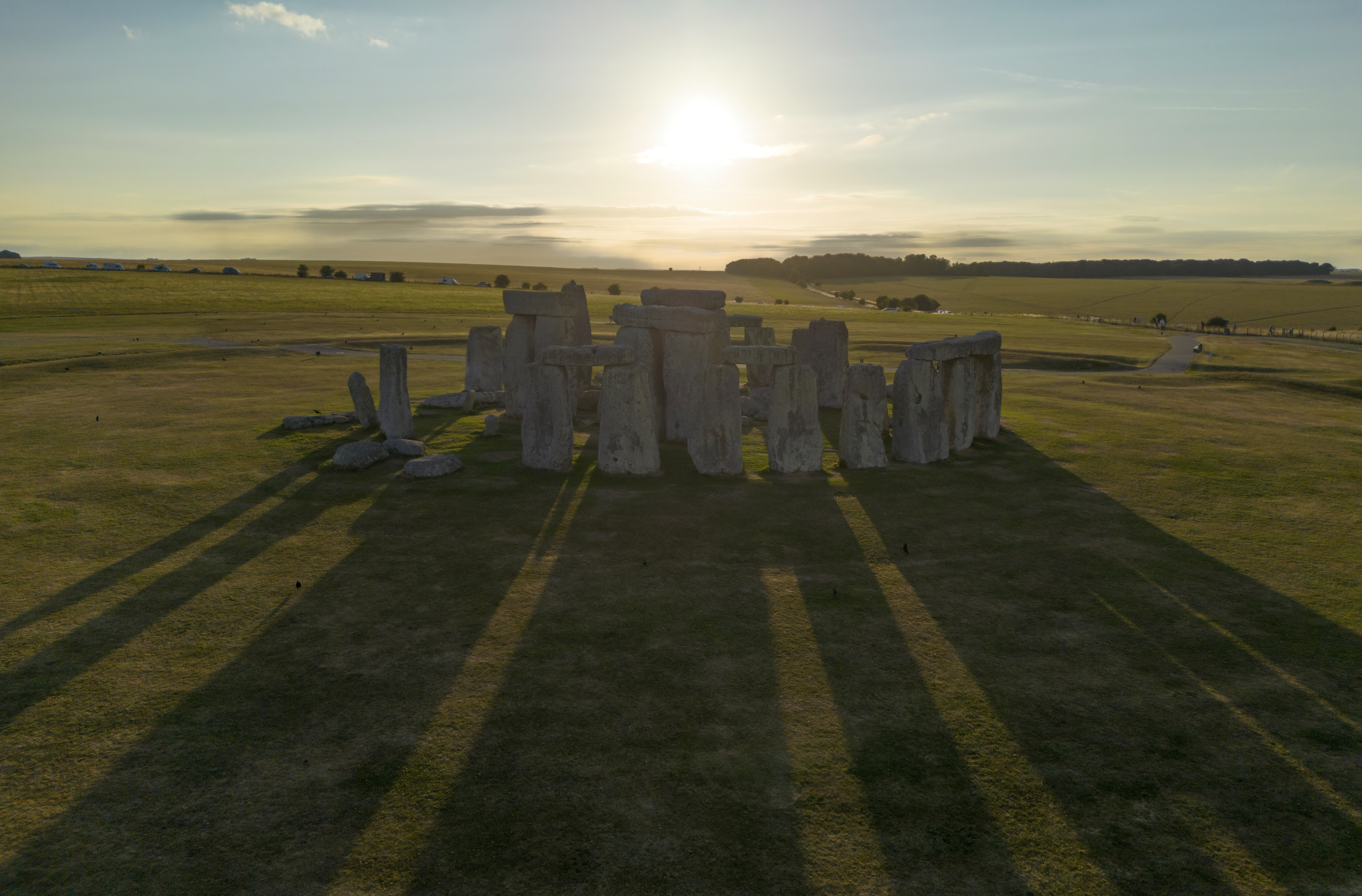

Last edited:
Dougcjohn
Well-Known Member
- Joined
- Nov 18, 2017
- Messages
- 969
- Reactions
- 530
- Age
- 67
Yes, Video editors can be confusing and in-depth.I envy you all being able to edit, I downloaded Divinci but it was looking so complicated so tried others and even appealed on Facebook for some help as I have difficulty learning things because of a work induced breakdown years ago and so I'm stuck but I have mastered Gimp but it doesn't edit video. Keep up the good work.
If you have an iPad Pro, you can purchase a very inexpensive video editor that competes equally with full editors for the majority of tasks the majority ever utilize. I think under $40 USD.
Try LumaFusion, iOS app.
YouTube the product, the more you check the more impressive.
Plus the iPad Pro can amazingly outperform many notebooks or home systems in GPU and Processing.
LumaFusion has a much shorter learning curve... it's not simple but not as complex to learn and utilize. Riddle recently introduced a training product this week. They're excellent training.
I quickly got up to speed and gained several plug-in's and extras included in package with VloggingSecrets a year or so back.
I find myself using LumaFusion over FinalCutPro or Divinci for ease and speed and haven't found any limitations. Plus, you can still move project to FCP or Divinci from within LumaFusion.

LumaFusion Tutorial - Mobile Video Editing [November 2023]
This LumaFusion tutorial is for beginners, intermediate and advanced users. With real-time instructor access. The fastest way to master LumaFusion.
I hate how software companies are all going to the yearly subscription and Adobe pricing is absolutely ridiculous for the novice hobbiest. There has got to be a way to view/edit these dng files without paying Adobe prices.
I use RawTherapee. not much experience with Raw editors, but this program seems absolutely nice to me. I THINK it is absolutely free too.
CanadaDrone
Well-Known Member
- Joined
- May 9, 2018
- Messages
- 2,176
- Reactions
- 2,065
I envy you all being able to edit, I downloaded Divinci but it was looking so complicated so tried others and even appealed on Facebook for some help as I have difficulty learning things because of a work induced breakdown years ago and so I'm stuck but I have mastered Gimp but it doesn't edit video. Keep up the good work.
Do you have an iPad? LumaFusion is dead simple to use and it's a full-featured video editor. The only thing it can't do is distortion correction which isn't really an issue for the M3P. Also as someone else already mentioned above, you can move your LumaFusion projects into Davinci which may help with the learning transition.
There are lots of good YouTube tutorials for LumaFusion, as well as Davinci if you wanted to give that another go.
Davinci is literally a Hollywood-grade editor in every sense, so it can be a bit overwhelming, but it doesn't have to be. The key is just to watch some beginner tutorials and ignore the rest.
I have a shoot in Iceland coming up in a couple months and I *really* want to take the Mini instead of my bigger drones but I get inconsistent evenness of sharpness out of this little guy in terms of stills. I get zones of really soft sections on some images and then not so much on others.
Is anyone else having issues of uniformity of sharpness?
Is anyone else having issues of uniformity of sharpness?
Not me, I am more than pleased with the quality and looks of my images straight from the drone, cheers LenI have a shoot in Iceland coming up in a couple months and I *really* want to take the Mini instead of my bigger drones but I get inconsistent evenness of sharpness out of this little guy in terms of stills. I get zones of really soft sections on some images and then not so much on others.
Is anyone else having issues of uniformity of sharpness?
Flashheart
Well-Known Member
Nope, but I have read that this issue is possibly caused by a decentred lens. Search this forum for ‘decentred lens’ for more info.I have a shoot in Iceland coming up in a couple months and I *really* want to take the Mini instead of my bigger drones but I get inconsistent evenness of sharpness out of this little guy in terms of stills. I get zones of really soft sections on some images and then not so much on others.
Is anyone else having issues of uniformity of sharpness?
CanadaDrone
Well-Known Member
- Joined
- May 9, 2018
- Messages
- 2,176
- Reactions
- 2,065
I have a shoot in Iceland coming up in a couple months and I *really* want to take the Mini instead of my bigger drones but I get inconsistent evenness of sharpness out of this little guy in terms of stills. I get zones of really soft sections on some images and then not so much on others.
Is anyone else having issues of uniformity of sharpness?
I have been to Iceland and with the weather you are likely to encounter (particularly wind), I would bring the heaviest drone you have. I had my M2P with me and there were many times I simply couldn't fly - if I had a Mini with me I would have flown even less.
Also, most of the places you will want to fly (i.e. every tourist stop, major waterfall, major landmark, etc.), all drones are prohibited anyway (look for the signage), so anywhere you do fly you will likely be the only person for miles, especially if you leave the area around Reykjavik.
Regarding your Mini 3, some lens decentering is normal on all lenses, even full frame camera lenses costing thousands. It's also much more prevalent on wide angle lenses of all types, unfortunately. You need to do some controlled testing, and if one side or area of the image is extremely soft compared to the opposite area of the image, and that is repeatable, then you probably have a decentered lens. If you're looking at the extreme edges and corners and finding they are quite soft, that's normal.
Another thing to keep in mind is that at hundreds of feet in the air, fine details have almost no resolution on them, so when you zoom in, it's going to look soft due to the low pixel density. Other things can also affect sharpness such as atmospheric distortion and heat distortion, but that will affect the whole image. You probably already know most of that, but just in case.
Another thing to consider is swapping to a nocturnal schedule when you're there to avoid crowds, since you will have nearly 24 hours of daylight. I frequently went out around 1-2AM and it was nice and bright with absolutely zero people.
It's only light at 1-2am in the middle of summer in Iceland. A couple of months from now (ref when @KS-6 says they'll be going) it'll be dark for a good 8+ hrs through the night.
Similar threads
- Replies
- 3
- Views
- 2K
- Replies
- 30
- Views
- 7K
- Replies
- 28
- Views
- 6K
- Replies
- 14
- Views
- 1K
DJI Drone Deals
New Threads
-
US exempts some foreign-made drones from FCC import ban on new models
- Started by Occams Razor
- Replies: 2
-
-
5P has that crazy Air 3S RTH under trees, through buildings
- Started by Droning on and on...
- Replies: 1
-
-
[Pilot Institute] The Effect of Banning Affordable UAS in the United States
- Started by mavic3usa
- Replies: 1











